My guest on today’s show wisely observes that pretty much every single thing you interact with, from your favorite logo on a coffee cup to that emoji you just texted a friend, has been thoughtfully designed.
I’m super excited to welcome to the show Debbie Millman, a bonafide force in the world of design. Debbie is an author, speaker, and teacher shaping the minds of future branding gurus at the School of Visual Arts in New York and steering the long-running, iconic podcast Design Matters.
In this chat, we’re diving into the thick of it all. Why does design matter? Not in a theoretical sense, but in the very fabric of our daily lives. Debbie shares insights from her journey, the challenges along the way, and how looking back helps provide context to understand our world today.
From extensive interviews Debbie has done with some of the most influential creatives, she offers insights into how they have been able to shape their life’s design to leave a mark on the world. This conversation is a peek behind the curtain of design’s impact on all of us in the marketing branding sphere, as well as society as a whole. So, without any further ado, on with the show!
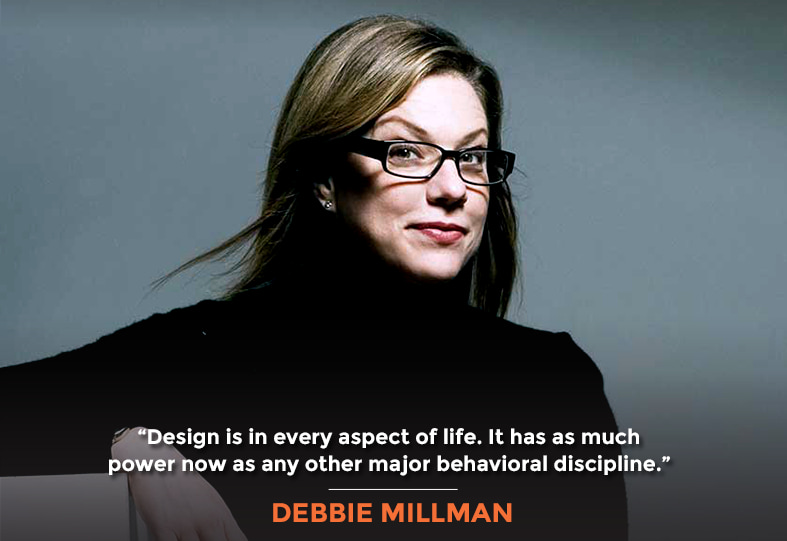
In This Episode
- [02:08] Stephan welcomes Debbie Millman to the show as she shares insights on design’s impact on daily lives and society. Both of them initially discuss their experiences in the business world.
- [13:56] Debbie discusses insights from her book Why Design Matters, which features interviews with creative people who have taken risks and overcome obstacles to create remarkable work.
- [18:16] Stephan asks Debbie about her favorite book. Debbie also shares how her books got published.
- [29:04] Debbie shares her recent projects and collaborations.
- [35:27] Debbie recalls a story about turning a negative experience into a positive one despite rejection.
- [41:06] Debbie describes her process in her podcast interviews.
- [47:53] Debbie advises on how to make the most of life’s challenges, emphasizing the importance of taking slow steps and enjoying the journey.
Debbie, it’s so great to have you on the show.
Thank you so much. It’s great to be here.
You’ve won a number of awards and some recognition. I’m curious to hear how that unfolded for you. Those are some of the honors you’ve gotten.
I guess after 40 years in the business, people may feel that I was worthy of those things. I don’t know. My success came much later in life. I did not have a lot of success out of the gate, and I really just worked hard. I’m very, very grateful that a couple of people have noticed.
More than a couple of people, but that’s awesome. You’ve been podcasting for quite a while. What’s the story behind that?
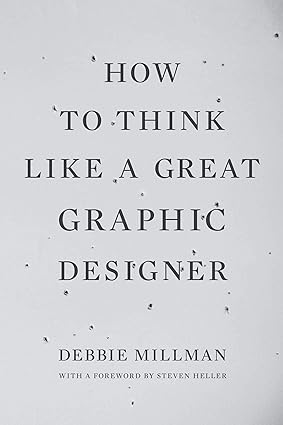
Back in 2004, I was the president and one of the partners at a branding consultancy called Sterling Brands. I was about 13–14 years into my career before I got to Sterling. At that point, I had really struggled quite a bit in that first decade or so. When I got to Sterling, it was really the first time that I became financially successful, and I was acknowledged in the organization as a success through a number of promotions.
Because that was so unusual for me, I gave it even more than I had already given it. I had abandoned many of the more creative things I was doing for this more commercial and corporate work. After about a decade of doing that, I felt that maybe I had lost some of my creative spirit, or maybe all of it, and wanted some outside endeavor that was not consumed with marketplace position and a return on an investment. I wanted something a little bit purer.
I got this opportunity to host a radio show on Voice America. I thought they were offering me a job, but they were really offering me an opportunity to pay them for the airtime, but I decided to do it anyway. That will tell you the level of desperation I had for doing something less commercial and more creative. I started the show in 2005. In 2009, I moved the show to Design Observer, and in 2019, I joined the Ted Audio Collective. Next year, it will be 20 years of podcasting.
How many episodes is that?
I have lost count because we also do some repeats, so it’s very hard to say. But I would say it’s probably close to 600 at this point.
Good for you. Awesome. What stands out in your mind is the best episode you’ve ever done?
Many successes come much later in life when you work hard.
I couldn’t tell you that. There are so many for so many different reasons. I loved interviewing Tim Ferriss. We have a wonderful chemistry and rapport. We’ve interviewed each other on each other’s podcasts. We’ve shared some very deep and soulful conversations on both our podcasts.
I’ve interviewed Chris Ware, who I think is a genius. I’ve interviewed my wife, whom I met through an invitation to be on the podcast. Steven Heller is the person who I’ve interviewed more times than anybody else. I think it’s about 14 times in 19 years, maybe even more. Thomas Kail, the director of Hamilton, was an extraordinary interview from my perspective. Jason Reynolds made me cry. Glennon Doyle and Abby Wambach made me laugh. There are so many, it’s hard to say.
What did Glennon Doyle say that made you laugh?
I couldn’t tell you specifically. I just remember we had a lot of fun talking about the patriarchy, what it means to stand up for yourself, how they got together—Glennon and Abby are married—how Roxanne and I got together, and things like that.
That’s cool. What was it about your interview? I guess since you’ve been interviewed by Tim, let’s start there. What wisdom nugget did you share with Tim that made the episode amazing? I’m curious if you can recall that.
Have you listened to the episode?
No. I’m looking at the page. It’s from 2017, so it was a while ago.
No, that was probably the first one. The more recent one was where we shared our histories of sexual abuse.
Wow. If you could distill into a sentence or two a bit of life advice that you might’ve shared either with Tim or that Tim shared with you, what might that be?
Believe survivors when they tell you that they have experienced any abuse or assault and that there is a meaningful life after that as well.
Amazing that you are willing to go out on a limb and share your experience with vulnerability, help people find their path, and work on their healing.
Thank you. I owe that to Tim. Tim is an extraordinary human being. He really uses his platform, I guess because of the lack of a better term, to really help people become stronger. I have learned a lot from him and have been the recipient of many of his generosities; I guess that’s the best way to put it.
We use design and branding to signify who we are, what we believe, and what we're most committed to. Share on XHow do you use your platform to help people become stronger?
I’m on the board of the Joyful Heart Foundation, which is a foundation that the actress and activist Mariska Hargitay started 20 years ago. She started that a few years after starring on the TV show Law and Order SVU, which she still stars in. She had been getting quite a lot of letters from people who were watching the show about their experiences. She decided to start a foundation to raise funds to help eradicate sexual assault, domestic violence, and child abuse, as well as more recently, she’s worked very hard to end the rape kit backlog in our time.
She created an Emmy award-winning documentary called I Am Evidence, which is all about the rape kit backlog. I have been on the board for about ten years. For five of those, I was the chair of the board and have worked to redesign and reposition the organization—redesign the identity, redesign the website, and help reposition the organization to create a real roadmap for growth.
That’s awesome. Do you feel destiny or synchronicity got you to start the podcast and get you onto this path?
Sometimes I think that. I think it’s a combination of opportunity, timing, and effort. If you keep doing it every day or as often as you can and practice practice and practice, then eventually, your number will land on the wheel, so to speak, of life. But you have to keep playing; you have to keep doing it. I think it’s a combination of both.
I do feel very fortunate because I think there are people who keep trying, keep trying, and keep trying. That number feels like it’s not ever going to show up, but I do feel like, in many ways, mine has a number of times. Whether that’s serendipity, luck, grace, or the manifestation of hard work, it’s hard to say.
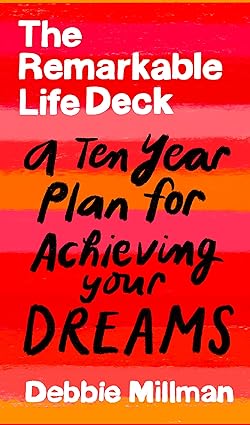
You’re President Emeritus of AIGA. I know of AIGA. I’ve been somewhat familiar with them for decades. They’ve been around for a long time, and it’s quite an honor to be President Emeritus. How did that come about? What’s been your involvement lately, if any, with AIGA? And where do you think that organization’s heading?
I’ve been a member of AIGA since 1998 and was actually part of a brand experience special interest group during my early tenure with the organization. But then I got rejected, which resulted in my feeling very down about myself. But I do have to say, I still continue to be involved.
In 2004, Emily Oberman, the great legendary designer at the time, was president of the New York chapter. She invited me to join the New York chapter, which I did; I did that for two years. Then, I was invited by Sean Adams to join the national board, which I did for another three years. Then, I was asked to be president, which I did from 2009–2011.
At that time, I visited all the chapters. There were 66 chapters at that time, and I visited them all. That included South Dakota, Alaska, Hawaii, the five chapters in California, and the four in Florida. It was wonderful. I really enjoyed doing that. I was on a mission to create a sense of inclusivity as opposed to exclusivity within the membership.
I’ve also spent a lot of time with students because students make up a really big percentage of the members. Essentially, I felt that in my time there, I helped establish their social media presence. From 2009 to 2011, it was a very different world than it is now.
AI is changing design and how designers interact with clients and produce results for them.
My involvement now is that I was just the host of their most recent AIGA conference, which was in October. It was one of the most successful and well-attended conferences they’ve ever had, so I’m super excited about that.
I’m not on the board right now. While I’m still a member, I am not part of the executive leadership. They’ve had some stumbles, and I was asked recently to help them begin to navigate out of those troubles. COVID really hit them hard, with changes in leadership and financial issues, but I think they’re back on the right path to solvency and relevancy.
They had some big events, too, back in the day, such as design conferences.
They still do. They still, I think, mean a lot to a lot of people. Hopefully, their roadmap for growth will be robust.
You have a book called Why Design Matters, which is relevant to what we’ve been talking about with AIGA and how AIGA needs to stay relevant. They need to keep up with the times. AI is certainly changing design and the way that designers interact with their clients and produce results for them. I’m curious to hear your take on where design is headed, why design matters, and how your book ties into all that.
The book is a collection of interviews I’ve done on design matters. At that point, the book came out in 2022. It was the best interview that I had chosen up until the time that the book was published.
Design is in every aspect of our lives.
What I really wanted to communicate is that design is in every aspect of our lives. All of our decisions are designed. We are creating the lives that we want to make. The hope for the book was to show how some of the world’s most creative people design the arc of their lives to be able to make and create these really exceptional, remarkable things.
It featured, I think, 55 interviews that I curated from the archives to really help people understand the paths that these people have taken and their origin stories. What were some of the obstacles that they overcame? How did they do that? How did they risk? What risk-taking did they undertake to do something new that hadn’t been done before?
What experiments did they have to undertake to produce the work that they were doing? How did it feel? How did they overcome rejection, frustration, or failure? That was really the main tenant of the book: to talk about why design mattered to the way that these people created their lives.
Overall, every decision we make and everything we see in the world now, aside from nature, is designed. It’s created. We communicate through a series of symbols. We are able to telegraph our identities through the things that we wear and the things that we carry with us. We are communicating more and more via symbols, emojis, and all kinds of marks now. We create logos. We put logos on pretty much everything now. There are logos on toilet bowls, for example.
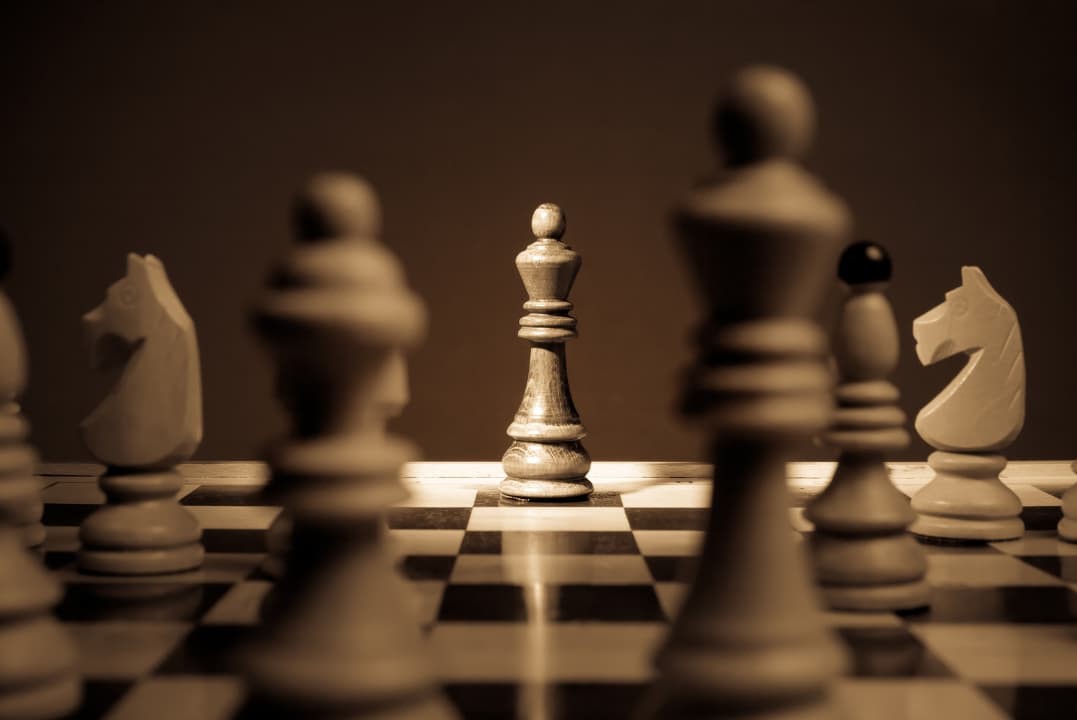
I believe that design and branding have as much power now as any other major behavioral discipline. We use design and branding to signify who we are, what we believe, and what we’re most committed to, and we use many of those symbols to find like-minded people with whom we can experience those values.
Beautifully said. How is AI aiding in this or perhaps detracting from it?
I am not a futurist. I’m more of an analyst. I like to look at the past to understand how we got to this moment in time. That being said, I’m certainly aware of what’s happening with AI. I think that I just know enough to be dangerous in terms of spouting any advice, information, or knowledge.
Some of the world's most creative people design the arc of their lives so that they can make exceptional, remarkable things. Share on XI think that Marian Bantjes talks about and writes about AI in a very compelling manner. I think Pum Lefebure from Design Army is doing some extraordinary things with AI and creating some of the advertising and design work that she’s doing. I have not used AI personally, but I can tell you that my students are using it.
It’s most interesting to see what they’re doing with it: how they can create future possibilities with specific prompts that allow them to visualize their ideas. I think that’s really, really interesting. I’m very, very fascinated by what they’re coming up with.
In terms of AI taking over human jobs, AI becoming sentient, or AI becoming something that results in our living in a world of Terminator 2, those are things that I couldn’t weigh in on.
No problem.
I’d love to know the answers to those questions, too.
The best way to predict the future is to create it, right?
Absolutely.
What’s your favorite book? You have six, right?
We use design and branding to signify who we are, what we believe, and what we’re most committed to.
I have seven. That’s a tough question. I think it might be Self Portrait as Your Traitor because it was my most experimental book. It’s my most personal book. It’s a book of illustrated essays, and it’s entirely created by hand. I think Self Portrait because I share a lot of personal stories. I’ve created all the art over many, many years. It was a risk to publish it, but I’m glad I did.
Did you get a publisher, or did you self-publish?
All my books have been through publishers. Absolutely.
Was it hard to get a publisher for that book? Did you get an agent to help you land a publishing company?
I didn’t. My first six books were agentless, but my last book, Why Design Matters and any future work i’m doing, is represented by Charlotte Sheedy, a legendary agent. She is an extraordinary human being, one of the great human beings on this planet.
Those first books were all as a result of, aside from one, publishing companies coming to me to ask me if I was interested in writing them. My first book, How to Think Like a Great Graphic Designer, was referred to me by Steven Heller, my co-founder in the branding program. This was prior to that happening, though. He was offered an opportunity to write that book with that title from Allworth Press, but he passed on it and suggested that they come to me to see if I would be interested in writing it, and I was. That was my first book, which came out in 2007.
My second book was a textbook of sorts called The Essential Principles of Graphic Design. It was published by Quarto Press, and they also approached me about that book. Based on the success of How to Think Like a Great Graphic Designer, Allworth wanted me to do a sequel of sorts, but I wasn’t really interested in doing part two.
Look at the past to understand how we got to this moment.
Essentially, the first book was interviews with designers, and then Brand Thinking and Other Noble Pursuits were interviews with brand practitioners like Seth Godin, Malcolm Gladwell, and really, really brilliant people thinking about branding and culture.
My fourth book was a book that Rockport Press came to me to do. It was Brand Bible, which I did with my students in 2011. I edited that book more than I wrote it because my students and my faculty put it together, and then I edited it.
Look Both Ways and Self Portrait were published by F+W and the first book I pitched to them. That’s the one book I pitched to them that I mentioned. The second book came about as a result of my wanting to continue the visual essays that I had started with Look Both Ways, which are illustrated essays on graphic design and life.
I wanted to keep my chops. I had worked for a year and a half on that book, so I wanted to keep those muscles in shape. I kept doing visual essays that I was publishing on PrintMag.com. The publisher of Print Magazine said, hey, after three years of doing that, would you like to collect your best of and create a book from them? And that was Self Portrait.
You’ve done a card deck as well, right?
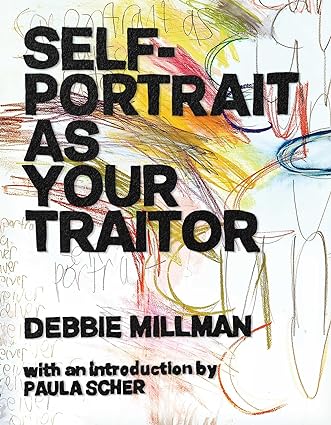
Yes, I did. I might do another, actually. I’m talking to the folks who put that together. I did a deck of playing cards and then a card deck called The Remarkable Life Deck: A Ten-Year Plan for Achieving Your Dreams. That was most recently done with the Chronicle. They approached me for that as well.
If you do another deck, what do you think it will be?
I don’t know. I’m working on coming up with a number of different ideas, so I’m not sure. The card deck I really wanted to do with DeckStarter. I had always wanted to do a deck of cards. I’d actually like to do some games, so who knows? Watch this space. We’ll see.
Cool. Awesome. How do you take what you’re doing with PRINT, books, card decks, and so forth and then turn that into an online experience for people? Passively reading a book, you hope that they apply what they learned in the book, but you can be more experiential and gamify an online experience more. I’m curious if there’s anything remarkable that you want to talk about in terms of that online experience or your students and fan base.
My program is hybrid. It is both an online experience and an onsite experience. We have to be able to create our curriculum, syllabus, and so forth with both an online experience and an onsite experience together. That came about as of Covid. We went completely online in mid-March of 2020. While it was an intellectually challenging experience for me only because I’m not particularly tech-oriented, we were able to very quickly—within days—get up and running on Zoom, Canvas, and Slack.
The second half of the year, despite what was happening in the world, we had a very, very successful year. The next year, we did it completely online. Because of those really successful experiences, we decided to make the program hybrid so that we could allow people who weren’t able to travel or couldn’t afford to live in New York to be able to participate and take the program. That’s been a really interesting experience.
Online publishing allows people anywhere in the world, at any time, to see everything we’ve published on the site.
Also, I was able to acquire PrintMag.com and the archives of Print in their entirety with six partners or five, including me, so six together, in 2019. That’s a completely online experience now. I love it. I love having this way of publishing that’s very immediate and up to the moment, and it allows people anywhere in the world, at any time of the world, to see everything we’ve ever published on the site.
It’s ironic, though, that it’s online only for something that is celebrating Print.
Yeah. Print was going out of business, the company that owned it. Because I had worked on it with those publishers, I knew that it was still profitable; it just wasn’t profitable enough for them.
Steven Heller, Laura Des Enfants, Deb Aldridge, Jessica Desio, Andrew Gibbs, and I all acquired Print’s assets and archives out of bankruptcy because we felt that it was a national treasure and important to preserve. That’s our main goal.
Will we ever be able to print another printed magazine? Maybe. Maybe we’ll do an annual; maybe we’ll do something quarterly. It’s very hard to say. But right now, we’re hoping to be able to put all the archives of all the magazines going back 80-plus years online.
We’re working to do that so you can see all the great work from the 1920s on, things made by Paul Rand, Milton Glaser, Saul Bass, and Seymour Chwast. The list goes on and on and on of the people who have contributed to the magazine over the decades.
Eventually, once we raise enough money to do that, that’s one of our goals. Then, the other is to reintroduce Print to a whole new audience through robust writing and reportage. We have about 15 columnists who are contributing original work to us. Seymour Chwast is still doing a monthly illustration. I have two columns on the site. Steven Heller still writes The Daily Heller every day. I’m really proud of what we’re doing, whether or not it’s in a printed publication or not.

That’s great. Your mission and your colleague’s mission there are reminiscent of Brewster Kahle‘s mission. Do you know who Brewster Kahle is?
I don’t.
He’s the founder of the Internet Archive.
Yeah, of course. I don’t know that I would say it’s quite that noble, but I’d like to think that we’re in the same model.
Yeah, it’s amazing. That’s really cool. Suppose you had some wisdom to share from all that experience working with all these great people, not just folks you’ve interviewed, but folks you’ve worked with in a business context, been on boards together, and so forth, like Steven Heller and so forth. What would be some of the best gems that you’ve gotten from working with these folks?
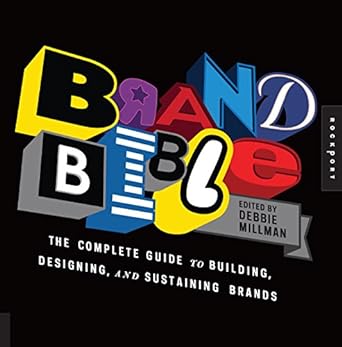
With Steve, I would say there is real power in publishing every day. I’ve watched over the years how he shows up for other people, the generosity that he has with his students, with his colleagues, with his peers, with his audience.
He’s probably one of the most impactful people in my life, helping me with my first book deal, co-founding the master’s in branding program with me, and co-founding many of the more progressive graduate programs at the School of Visual Arts.
Seth Godin has been a mentor to me for many years. We just collaborated on a project, which I’m super excited about.
Yeah, he writes every day, too.
He writes every day, too. He writes seven days a week. Steve writes five days a week. Seth has an incredible newsletter, which, if everybody listening isn’t already subscribing to, I highly recommend subscribing to it because you get a gem every day.
He’s someone who’s also been on the podcast, I think, about four times. I’ve really realized from these extraordinarily talented people that they’re also mostly very generous. I think real power is when you can share it with others.
There is real power in publishing every day and sharing it with others.
Amazing. You can change lots of lives and really impact the world.
Absolutely.
What’s next for you? What are you working on that most excites you? Maybe something that you’re not even telling the world about yet.
I’ve done a couple of really cool art projects over the last couple of years. One is a project that I did for the Broadway Museum, where I did a big installation. I created two massive pieces of art that are a permanent installation in the Broadway Museum, which is honoring 550 people who lost their lives during the AIDS crisis in the Broadway Community in the 80s. What I did was hand illustrate, hand-drawn, and hand letter all of their names. That is essentially wallpapering two very large walls in the Broadway Museum.
That’s a lot of the work that I want to do moving forward. I just finished a project that will probably be launched in the next couple of weeks with NASA Jet Propulsion Lab (JPL) at Caltech. It’s another piece of art that I created that’s actually going to space. I can’t say more than that at the moment because it hasn’t been released to the public, but I’m very excited about that.
I collaborated with Seth Godin, as I mentioned, on a project utilizing 365 of some of the best quotes from his newsletter. That will be out towards the end of the year. Because it’s 365 days, I think you could probably get a sense of what it is. That will be out towards the end of the year, and I’m super excited about that, too. Those were probably two of my most fun projects.
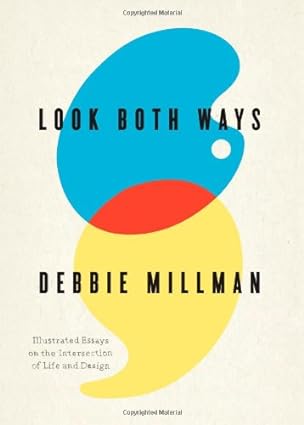
I have another project that I’ll hopefully start with another book. That’s more of a visual book. It is going to be about gardening.
Cool. My other podcast, which is a personal development podcast, had an amazing gardener on. She’s an author about gardening. Fran Sorin is her name. There’s a lot of life advice that a gardener can offer based on understanding how gardening is a mirror for life.
Absolutely. The great writer Alyssa Altman says that gardening is a contract with hope. I love that.
That’s cool. Yeah, I like that. Since this is a marketing podcast, from a marketing and branding standpoint, what are some of the musts or the real shoulds for our listeners to implement in whatever campaign, initiative, or movement they’re trying to establish? What are some of the things that would be a must-have or at least a really nice thing to have?
I think the most important thing is a reason for being. Why are you doing this? If you’re doing it because somebody else is doing it and it was successful, it’s not going to be as successful. It’s just going to look like a me-too product or idea.
The first thing I would say is to have a unique reason for being. What is the benefit of whatever it is you’re making? People are going to be spending money. You’re asking them to spend money on something that you’re making. What are you giving them?
Gardening is a contract with hope. – Alyssa Altman
People aren’t as interested now in the different flavors, forms, or shapes of the bottles as they were. How is this going to make a difference in my life? How is this going to, at least for the moments that I’m using it, make me feel better about what I’m doing, who I am, what I’m capable of, or just how I feel in my body? I would say that that’s very, very important.
I also think that corporations need to stand for something. They need to believe, they need to have values, they need to have vision, they need to have a point of view, and they need to be able to share that because consumers want that more and more. They want to understand the company’s DNA so that they know whether or not they want to support those companies. Those are two things that I think are super important.
What are some examples of companies with really great DNA that they convey?
There aren’t very many because if they’re public, companies have a fiduciary responsibility to their shareholders. That means that they are really putting profit before anything else. When you do that, you are on a very slippery slope because you have a financial fiduciary responsibility to your shareholders, but you also want to feel that you’re communicating with your audience in a way that they want to hear.
The only company that I can tell you really puts its money where its mouth is, so to speak, is Patagonia. I think Nike did a really good job in supporting Colin Kaepernick because that was very risky. A lot of companies aren’t willing to do that. They’re not willing to be controversial.
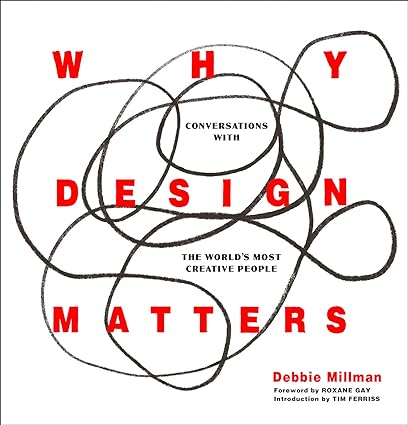
Look what happened with Bud, how they supported a trans artist and then took it all back because of the backlash. What’s worse than not doing anything at all is when you actually do something and retract it because people are angry with you.
I think that companies that are willing to take a risk and stand up for something that they believe in, whether or not it’s popular with the entire universe, are something that more and more companies are going to have to get comfortable with.
You have to be willing to polarize people, take a stand, and be okay with haters. It’s easy to say but hard to do.
Yeah.
There’s a book by Jay Baer called Hug Your Haters. He was a guest on this podcast and is a friend.
Dylan Marron has a podcast about that, Conversations with People that Hate Me. It’s fantastic.
That’s funny. There’s a segment. Which late-night show is it?
I love that one, too. Yup.
What would be some examples of things where you’ve taken what looks like a shit sandwich, something that’s a troll or some terrible attack, and turned it into something really good, like turning lemons into lemonade? What would be an example? Maybe it is from your own life or business or perhaps from a friend, client, or colleague.
I had one of those experiences back in 2003 after I got rejected from AIGA. I discovered that there was an article on a then very, very popular design blog, the first-ever design blog, called Speak Up. People criticized AIGA for associating with me because they thought I was a she-devil for doing branding and corporate work. Little did they know that I had already been rejected from AIGA.
Here I was in this moment, being hated by both the new upstarts in the design community, the bloggers, and the more Tony design organization that had been around for 90-something years at that point. I ended up entering the conversation online, trying very respectfully to outline my points of view that they were attacking and why I believe the things that I believe.
Have a unique reason for being.
It was devastating at the time. It was one of the most challenging experiences I had ever had because I really did feel, at that moment, the most hated person in the design business. The young upstarts hated me, and the Tony-established designers hated me.
However, through my discourse online with these folks and subsequent involvement, it turned out to be one of the defining moments of my life. I can say that almost every opportunity that’s come since 2003, I can thread back to that article on Speak Up. Definitely not only lemonade out of lemons. I would say lemon chiffon pie out of lemons.
My wife has this expression I love. It’s a gift, but sometimes the bow is on the bottom. It sounds like maybe that was an incredible gift that, at the time, looked not so much like a gift. The bow was on the bottom, but it turned out to be quite destiny-changing for you.
Absolutely. At the time, I thought it was the worst moment of my adult and professional life, but it turned out to be the most significant.
Do you feel like that might have been pre-ordained or something that you volunteered for before you even incarnated? I know that’s a metaphysical question there for you.
I like to think so, but I don’t know. Deep in my heart, I am more of a Big Bang kind of person. But again, there’s a lot of magic in the world, so who knows?
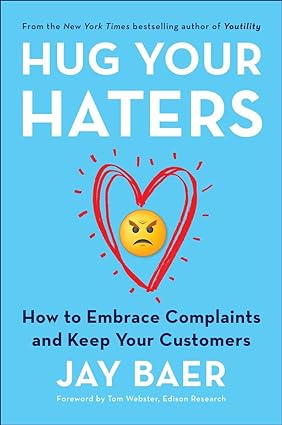
How did it come about that you won a Webby award? You have to get nominated and everything?
No, you have to enter your wares. I entered my podcast. I had been entering for years and years and years. There are two ways to win. One is through the judges; your peers in the community decide who the best podcasters are, what the best podcast shows are, and so forth. There’s also an opportunity to have the people’s choice.
I had, prior to this year, registered or entered my podcast eight previous times and not ever won. I was nominated but never won the actual physical award, the Susan Lucci of the Daytime Emmys. Finally, this year, I got one in each category. I got one from my peers in the judges of the Webby’s, and then one from the people, a People’s Choice Award and a Webby Judges Award. That was really nice. I’m going to take a year off from entering anymore because I just want to rest on my laurels of those two.
I don’t know if vindication is the right word, but certainly, it’s encouraging to know that you’re appreciated.
With Webby’s, when you win, you will get the opportunity to submit a five-word speech. They only allow you to five words, no matter who you are or how famous you are. That’s the acceptance speech. Because there are so many awards, you have to submit what you will say. If chosen, you get to go on stage and give your speech. Of course, for me, it was ’10 nominations, first win, thanks.’ They chose me, and I got to say that. That was nice.
Funny. The ninth time was the charm or whatever.
Yeah, 9th and 10th.
Congratulations.
Thank you.
What’s your dream list of guests for your podcast that you haven’t had on yet but are dying to have on?
Lin-Manuel Miranda, Neil Gaiman, Barbara Streisand, Michelle Obama, Rachel Maddow, Questlove. Yeah, that’s a good start. Those are all people I’ve written to and asked to be on the show. I have gotten responses from all of their people, so who knows? There’s a possibility in the future. We’ll keep our fingers crossed because it’s hard to say that they’ll say yes.
Do you send out the pitches or the invites yourself?
You have to be willing to polarize people, take a stand, and be okay with haters.
I do it all myself, all of it.
What’s your process? There are a lot of firms and agencies out there that will pitch to get on podcasts. I’m sure you’ve gotten plenty.
I get maybe 10 or 20 a day about being on the show. Mostly, I go after the people I want to interview. Every now and then, I will get a pitch from somebody I really want to interview. But my show is a long-form, hour-and-a-half deep dive, heavily researched podcast. I’m not interested in a 20-minute talk about their latest book, album, or show. That’s just not what I’m interested in. I’m interested in really understanding how they became who they are.
When I get a pitch from a PR agency or an agent, I have to make sure they understand that I’m not just going to talk about the project. They have to alert their client that this is a different podcast from maybe the other things that they’re pitching. That tends to be why I tend to go after folks; when I pitch those people, it’s all there. It’s all my process, what I do, examples, and so forth.
When I get pitched, and I’m interested, for example, a recent episode in 2023 was with Kyra Sedgwick. She’s very famous, and I love that I was invited to interview her. But I also didn’t know if she knew the show and if she was going to be expecting to get questions about her days on Days of Our Lives, the soap opera.
I wrote back to the PR agent. I said, yes, but this is the show, how I do it, I need this much time, and so on, and I wasn’t expecting to hear back. I wasn’t even expecting to get a no. I was expecting to get crickets. But then she wrote back and said, no, Kyra would love to do this and would love to be on the show.
We had a great conversation. The interesting thing with PR agents is that I have to make sure that their clients really understand what I’m trying to do and want to do it with me.
What’s an example or two of questions that you’re pretty sure no other podcaster on the planet asks your guests?
That’s not the kind of question I’ll ask. What I do is a tremendous amount of research, probably 40 hours per show. I read as much as I can about them. I also take existing podcast interviews that they’ve been on and have them transcribed so I can read them.
We are able to telegraph our identities through the things we wear or carry with us. We are communicating more and more via symbols and all kinds of marks. Share on X
Then, I craft a narrative arc that starts from their origin story and continues through to what they’re doing now, asking questions about things they’ve talked about already but going deeper.
I don’t have any cookie-cutter questions. There’s no question. Tell me about your first whatever. It’s all based on things they’ve said already that I can ask them about or questions about things they’ve said or done that I haven’t heard asked before.
What I want to be able to do is come to an interview with questions that keep my guests engaged, that they’re not thinking, oh, they read that from Wikipedia, or, oh, they took that directly from my website. I try to come up with original questions for every guest I interview.
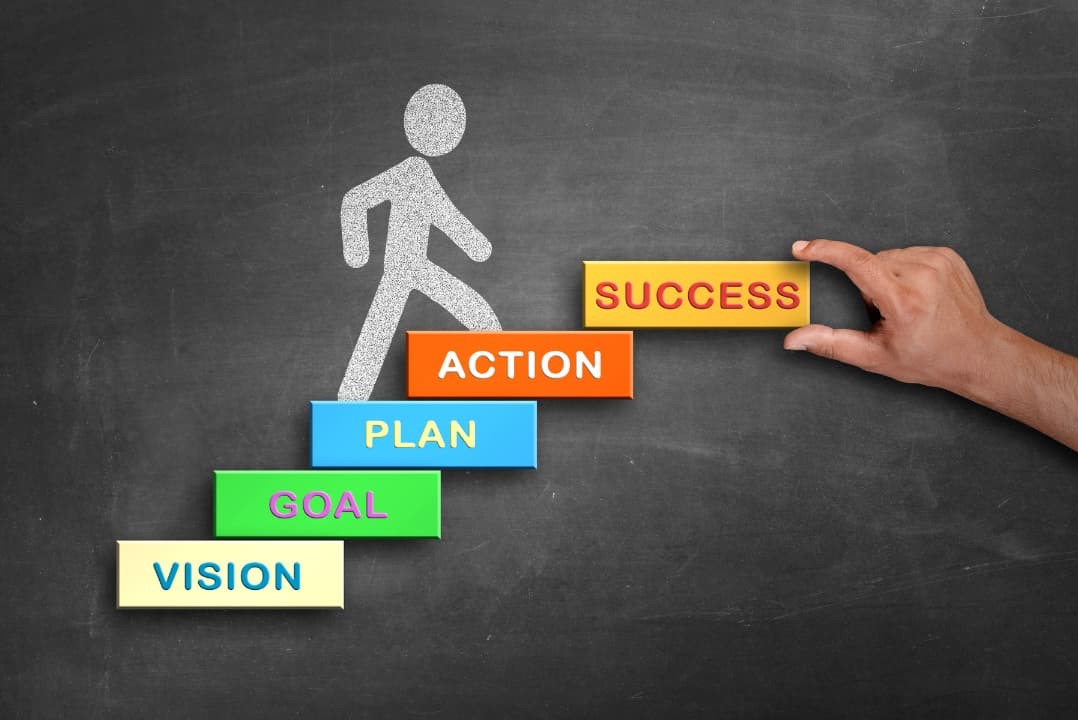
That is quite a commitment. Wow.
It is. Sometimes I’m like, why am I doing this? But that’s the only way I can do it now. I used to start with more canned questions. If you listen to my shows from 2005, 2006, 2007, 2008, and 2009, I’d love to ask your first creative memory. But I don’t ask that anymore.
Got you. I don’t have prepared questions either.
No, I have prepared questions. I have ten pages of questions ready to go, but they’re based on very specific things. I would never ever go into an interview with anyone without questions and research done in advance because I think it’s disrespectful to who I’m talking to.
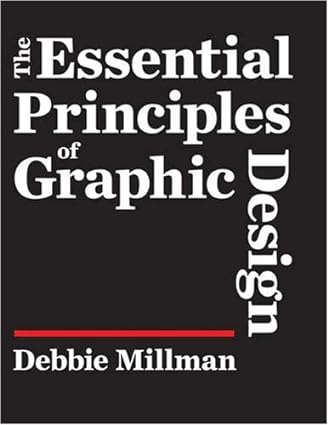
The last thing you want to do is have a conversation with somebody who’s been asked those same questions, and then they’re just like, when is this going to be over? I don’t want them to ever feel that.
That’s good. For me, I do it differently because I receive stuff. I’m receiving guidance and intuition as I’m interviewing.
Really? What intuitive sense have you gotten from our conversation?
When I asked you questions about AIGA, the company’s DNA, examples of folks who are doing it well, and stuff like that, I was just tuned in to my intuition, that still small voice. This shows more on my other podcast, which is a personal development spirituality podcast. In those interviews, it’s coming fast.
Are you a medium?
Yes and no. I put up a boundary of what I allow in, only divine and sacred. I’m not going to talk to somebody’s great-grandma because I don’t know how divine and sacred she is. I don’t really do mediumship. I did do that, but before, I was agnostic, and then I had a big spiritual experience.
Again, this is very much on the other show, like seeing in The Matrix and all that sort of stuff that I talk about on the other podcast, Get Yourself Optimized. It’s been quite a ride.
I’ve been doing these podcasts for eight years now, the two shows. The more I just surrender, let go, and let God, the better the questioning, the better the experience, and the more light is revealed.
If I had canned questions, which I don’t believe in anyway, asking the same questions for each interview—and I know some successful podcasters do that—that just does not resonate at all. But even just having pre-prepared questions means that I’ve constrained the magic, so I’m not going to allow an unfolding.
The most incredible conversations come about in ways that I had no idea. Someone is an expert on mold, let’s say, a world expert on toxic mold. We’ll not talk much about toxic mold, but we’ll talk about these spiritual epiphanies and stuff that takes up the entire episode. I just let go and let God.
It’s cool. Very cool.
Yeah, that’s fun. I know we’re getting close to time. If there is any last nugget or a bit of wisdom that you want to share with our listener, our viewer, in terms of life experience, design, branding, marketing, intuition, whatever it is, what would that be?
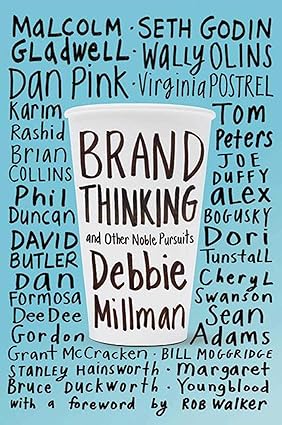
I love the question about lemons and lemonade. For people who are climbing the mountain of their lives, it’s more enjoyable to take slow steps up than running. This way, you get an opportunity to pick the lemons, make lemonade, and then turn all of that into lemon chiffon pie. Recognize that all of the steps lead you to becoming who you are.
Who was it that said that you can only connect the dots looking backward? Was that Steve Jobs?
I don’t know, but that’s a good line.
Awesome. Where do our listeners go to get your books, maybe take courses or whatever you have, or work with you directly if that’s an option? Where do you send them?
You can mostly get all my information on my website, debbiemillman.com. That also takes you directly to a link to listen to the podcast. All the shows are there. You can also listen to the show on any podcast platform. That’s the best way. On Instagram, I’m @debbiemillman as well.
Awesome. Thank you, Debbie. Thank you, listener. We’ll catch you in the next episode. I’m your host, Stephan Spencer, signing off.
Important Links
Connect with Debbie Millman
Apps and Tools
Books
Businesses/Organizations
Films
People
Previous GetYourself Optimized Episode
Previous Marketing Speak Episode
YouTube Videos
Your Checklist of Actions to Take










About Debbie Millman
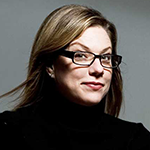
Named “one of the most creative people in business” by Fast Company, “one of the most influential designers working today” by Graphic Design USA, and a “Woman of Influence” by Success magazine, Debbie Millman is also an author, educator, curator, and podcast pioneer. Debbie is the host of the Webby award-winning podcast Design Matters, one of the first and longest-running podcasts in the world; chair of the first-ever Masters in Branding Program at the School of Visual Arts; co-owner and Editorial Director of PrintMag.com, and the author of seven books on design and branding. Debbie is the recipient of a Cooper Hewitt National Design Award and a Lifetime Achievement award from AIGA, the Professional Association for Design.







Leave a Reply